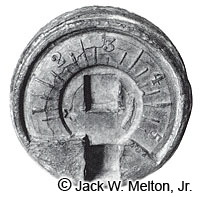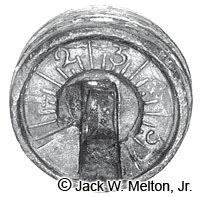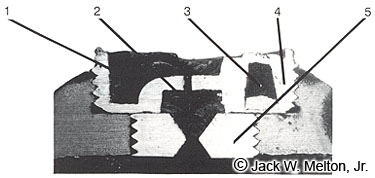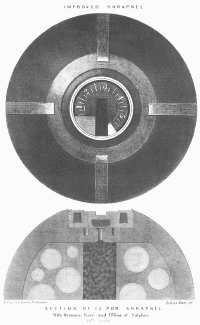Bormann Time Fuze

Federal 5 1/4-second
Bormann time fuze

Confederate 5 1/2-second
Bormann time fuze
 The
other end would continue to burn past the zero-mark, where it would travel
through a channel (1) to a small powder booster or magazine (2). This
powder then exploded, sending the flame through a hole in the fuze underplug
(5) to the powder chamber of the projectile. The purpose of the brass or
iron fuze underplug was to form a solid base of support
for the soft metal fuze, which could have easily been damaged during firing.
The
other end would continue to burn past the zero-mark, where it would travel
through a channel (1) to a small powder booster or magazine (2). This
powder then exploded, sending the flame through a hole in the fuze underplug
(5) to the powder chamber of the projectile. The purpose of the brass or
iron fuze underplug was to form a solid base of support
for the soft metal fuze, which could have easily been damaged during firing.Original Bormann fuze drawing from the book ORDNANCE INSTRUCTIONS FOR THE UNITED STATES NAVY: WASHINGTON, 1866.
